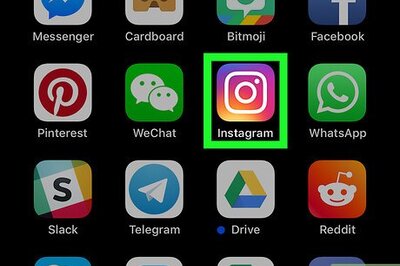
views
What is the Fruit of the Loom cornucopia theory?
Many people mistakenly remember the Fruit of the Loom logo having a cornucopia. The company claims its logo has always only featured a bunch of fruit against a white background. Yet still, many online claim this is wrong, and the logo did, at some point, feature a cornucopia of fruit. The conspiracy is a classic example of the Mandela Effect, in which many people experience the same false memory. The recollection of a cornucopia in the logo has circulated the internet in recent years as the phenomenon of the Mandela Effect grew in popularity. However, the trend of misremembering the FOTL logo goes as far back as 1973, when Frank Wess’ jazz funk album Fruit of the Loom was released with cover art featuring a cornucopia full of fruit. Again in 1994, a Florida newspaper article mistakenly mentioned the logo having a cornucopia.
What is the Mandela Effect, anyway?
The Mandela Effect is a collective false memory. More specifically, it’s a social phenomenon in which a group of people misremember the same detail about an event, thing, or person. The term was coined by paranormal researcher Fiona Broome in 2009, when she realized she and a number of other people mistakenly remembered former South African president Nelson Mandela dying in prison in the 1980s. Mandela actually served a 27-year prison sentence and was released in 1990, after which he served as president from 1994-1999 and died in 2013. Some people believe the Mandela Effect is evidence of alternate universes or of glitches in the matrix, but neuropsychologist Aaron Bonner-Jackson, PhD, posits that the Mandela Effect may happen because of our brains’ ability to create and store false memories. The interesting thing, though, is that so many people can create and retain the same false memories.
So…was there ever a cornucopia in the Fruit of the Loom logo?
Fruit of the Loom says no, there was never a cornucopia. You may remember the Fruit of the Loom logo featuring a cornucopia overflowing with fruit, but you’d be mistaken! The logo is just a bunch of fruit on a plain white background. In response to the hubbub about the cornucopia, FOTL tweeted on their official account in January 2022, “Did it hurt? When you realized our logo never had a cornucopia.”
Some people still insist there was a cornucopia. Even though Fruit of the Loom claims they’ve never used a cornucopia in their logo design, believers on the internet insist that there was a cornucopia in a past iteration of the logo. Some have even found apparent evidence—like this T-shirt with a logo featuring a cornucopia—that seem to dispute what the company says. However, Snopes took a deep dive into the issue and asserts such images of the logo featuring a cornucopia are fakes. Wouldn’t Fruit of the Loom know their own logo history? Some say apparently not—but to others, FOTL’s insistence that there was never a cornucopia is an intentional lie for attention (which may translate to a boost in sales).
Other Popular Mandela Effect Examples
The cornucopia conspiracy isn’t the only example of mistaken group memory. There are lots of examples of the Mandela Effect out there—and most of them relate to pop culture or historically significant events. See if you’ve misremembered any of the following: It’s Looney Tunes, not Looney Toons. In Star Wars, Episode V: The Empire Strikes Back, after Darth Vader cuts off Luke’s hand, he doesn’t say, “Luke, I am your father.” (He says, “No. I am your father.”) It’s The Berenstain Bears, with an A, not The Berenstein Bears with an E. The Monopoly man never wore a monocle (but Mr. Peanut does). It’s Jif Peanut Butter, not Jiffy. It’s The Flintstones (with a T, as in the stone, flint), not Flinstones. Mickey Mouse never wore suspenders—not in his first appearance as Steamboat Willie in 1928, and not now.


















Comments
0 comment